You may not find this terribly rewarding unless you're included here, so this is a good time for casual and random browsers to turn back before they get too caught up in the sweep and majesty of the proceedings and can't let go.
We were visiting the Veneto region north of Venice earlier this spring, and now we're back to see some more of what we missed farther south.
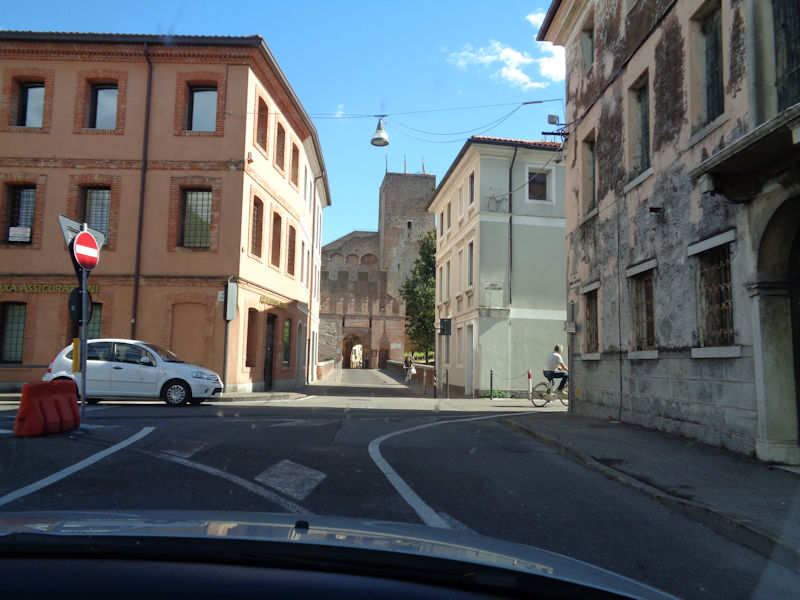
Approaching Cittadella's centro storico from the north -- back in February we were coming down from Bassano del Grappa and joining the SR53 to Castelfranco Veneto at the Cittadella exchange. Nothing about Cittadella looked interesting at that time (from the SR53 highway) and we blew right past it.

A month or so later we looked up Cittadella in a guidebook and slapped our foreheads smartly. We'd made a huge mistake, not our first or last one, so here we are, back again. We're entering the walled old city over the former drawbridge of the Porta Bassano northern gate, but . . .

. . . taking a left turn halfway through the gate into the carpark that rings half the city, outside the walls but inside the moat.

Cittadella, a small city of ca. 20,000 souls, has arguably the best or one of the best entirely walkable set of medieval city walls in Europe, 1.46km in circumference, about 450m in diameter in an ellipse, with four major gatehouse keeps, 12 large towers and 16 smaller ones, all recently 'made safe' and opened for enthusiastic tourist access in 2013. It's a brilliant job.

This is the Treviso Gate facing eastward (towards Treviso, duh), with a triple access system and a 25m tower. This like the walls has been constructed of brick and gravel from the river Brenta 5km to the west.
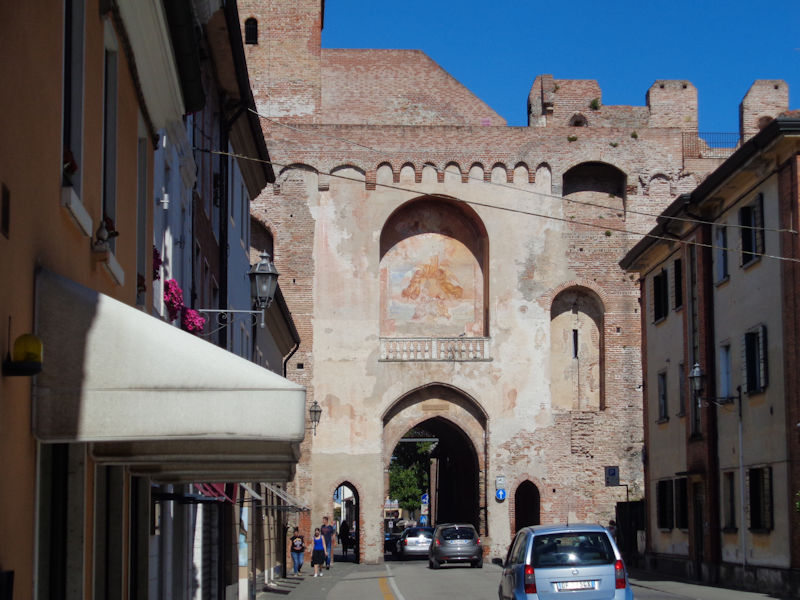
The inside of the Treviso Gate on Via Marconi, with frescoes of the Annunciation. In the ceaseless interurban aggressions of the High Middle Ages, Castelfranco was built 11km east of here, completed in 1218, by the rival city of Treviso to suppress the local warlords and keep Padua's expansionist pretensions at bay. Padua then built Cittadella as a livable fortress, in 1220-1222, more or less ab initio, as a suitably robust response.

The Palazzo Pretorio, residence of the podestà or governor under Padua's and, from the 15th century, Venice's administration of the city. Somebody was inhabiting the area before the Romans showed up in the 2nd century BC, but for them the place was strategically well placed -- the Via Postumia road connecting Genoa with Aquileia on the Adriatic was constructed in 148 BC, the Via Claudia Augusta following the Valsugana from the Adriatic northward towards Germany and Austria was completed in the first century AD, and the region around Cittadella was virtually at the crossroads.
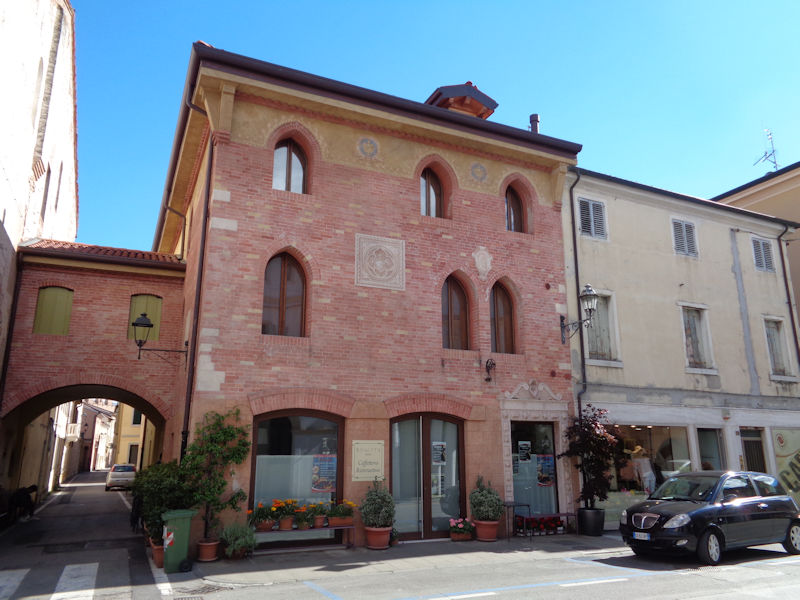
The Bonetta Bistrot. Padua's expanionist aspirations from the 12th century onward set off an extended period of interurban warfare in the middle Brenta area in the Veneto region, namely amongst Padua, Verona, Vicenza, and Treviso most importantly, including a number of imposing family dynasties. In 1237 the dreadful warlord from Bassano, Ezzolino III da Romana, Imperial Vicar for the Emperor Frederick II, conquered Cittadella and ruled it and many other towns, cruelly we're told, until 1256 -- he it was who contributed to the development of Cittadella's fortifications and built the Torre di Malta into the Porta Padova or southern gate "as a ghastly prison for his enemies in 1251".
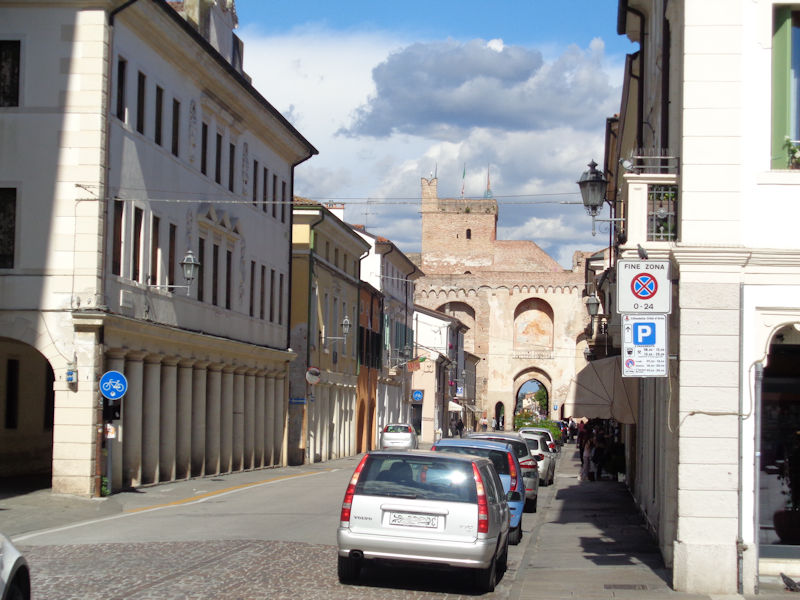
The Via Guglielmo Marconi, looking back at the Treviso Gate. In 1319 the famous warlord Cangrande ("Big Dog") I della Scala, or Scaliger, ruler of Verona, conquered Cittadella whilst extending the Emperor's and his own hegemony past Vicenza and Padua into the March of Treviso -- the regime continued until 1336 when his successor, Mastino II della Scala, was forced to surrender all his cities except Verona and Vicenza by an ad hoc League comprising Bologna, Ferrara, Florence, Mantua, Milan, Perugia, Siena, Venice, and the Papal States -- that kind of collaboration was rare in Italy.
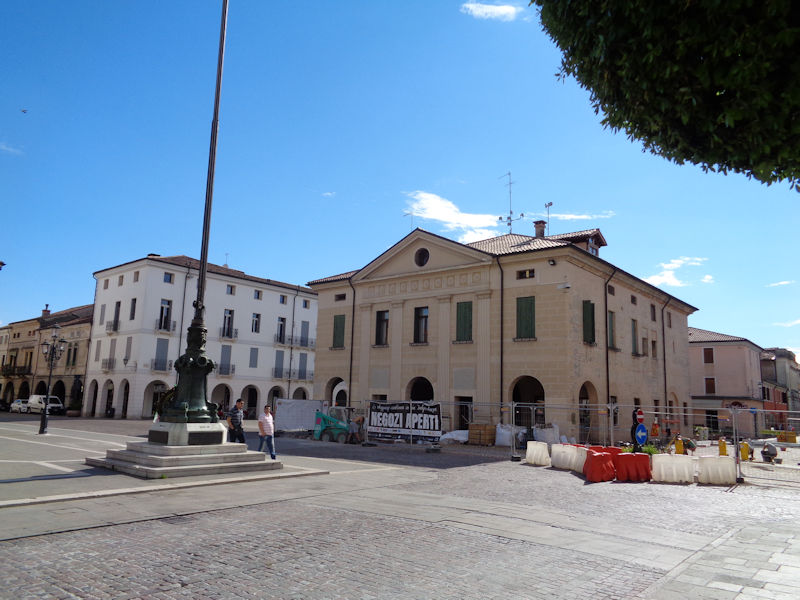
The central square, the 'Piazza Duomo' in effect, is called the Piazza Luigi Pierobon to honor the 22-year-old student and leader in the Vicenza formations of the anti-fascist partisans, betrayed in Padua and executed in August 1944. The building is the Palazzo della Loggia from at least the 15th century, remodeled in 1816 and now the home of the local police.
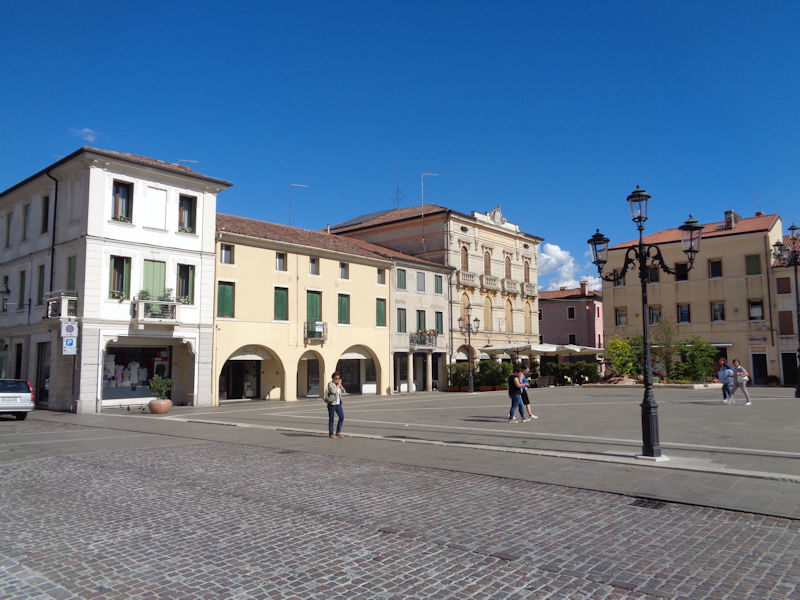
The Piazza Pierobon. Next in the queue, the Carraresi lords of Padua returned in the 14th century, until Gian Galeazzo Visconti, soon to be Duke of Milan, took a turn in 1389 -- at last the good citizens of Cittadella turned themselves over to the protection of the Venetian Republic in 1405, as did many other battered, exhausted cities of the region. Briefly, the condottiere Roberto Sanseverino hung out here, where he had various possessions, when he was out of favor with employers in the 1480s, and in the early 16th century Venice granted the city as a fief to its favorite mercenary captain, Pandolfo IV Malatesta (aka 'Bad Pandulph'), former Lord of Rimini, but otherwise Cittadella prospered under the Venetians until Napoleon arrived in 1797.

The neoclassical Duomo of Cittadella ("House of God and Gateway to Heaven") was built between 1774 and 1826. There are pictures by several regional worthies, like Jacopo da Ponte and Leandro Bassano, in the sacristy and the belltower, but we gave it a miss.
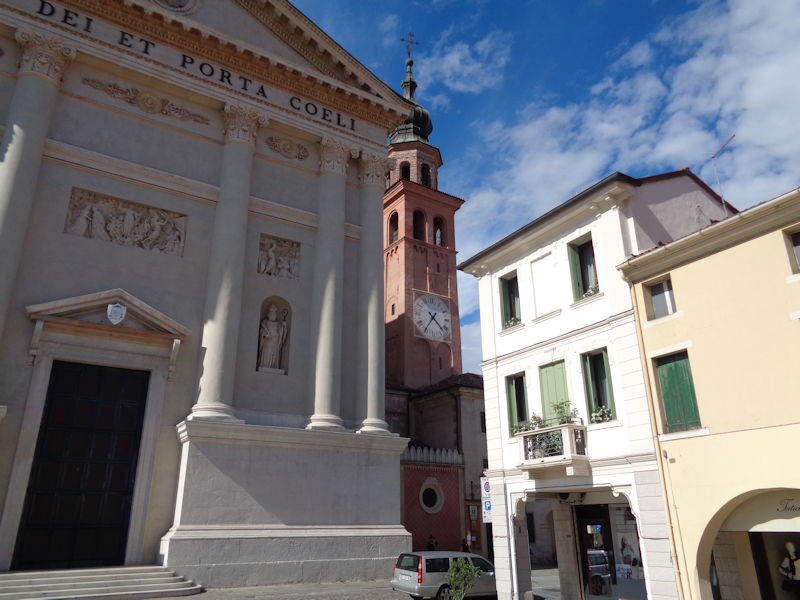

Walking northward now towards the Porta Bassano, with the rocca or fortress and the 'Captain's House', formerly the residence of the Captain of the Guard and a small garrison. Off to the left, behind the tree, is the Piazza Martiri del Grappa, in memory of the partisans killed by Nazis and Italian fascists on Monte Grappa 25km to the north.
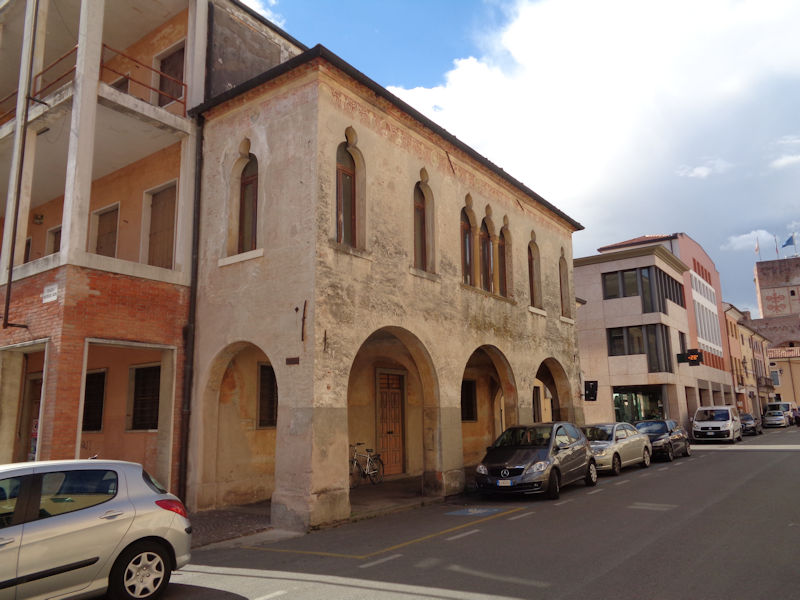

A tight squeeze through the five gates of the fortress leading into the city
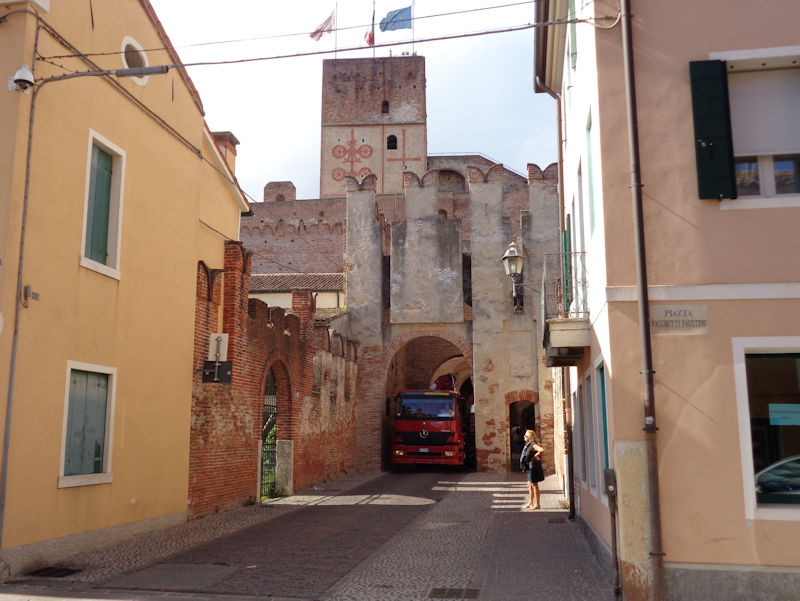
Most of the merlons along the battlements have had to be repaired, and most of those are in the squared-off "Guelph" style -- these along the roadway have been made in the "Ghibelline" swallow-tail style.

The fresco of the four-wheeled wagon on the tower is the coat of arms of the da Carrara family, reminiscent of the carroccio that accompanied medieval northern Italian armies, bearing the civic standards, an altar for the pre-battle benedictions, and sometimes the soldiers' pay; the red cross next to it represents the coat of arms of the city of Padua.

The Tourist Office is located on the first floor of the Casa del Capitano, above the street level barriers -- with its small museum, it also leads out onto the Ronda Walkway or Parapet Walkway (also called the Camminamento di Ronda, or the La Cinta Muraria), inaugurated for the entire circumference of the city walls after some years of renovation in June 2013.
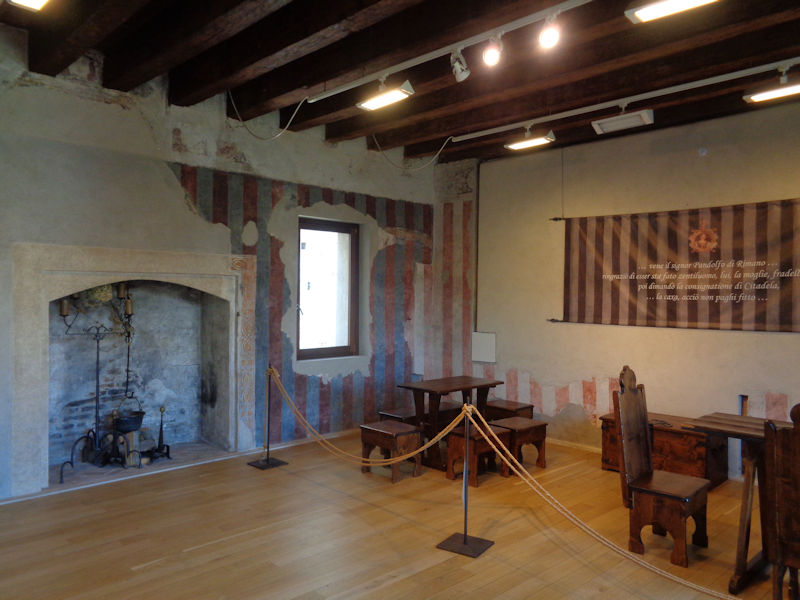
A hall adjacent to the Tourist Office
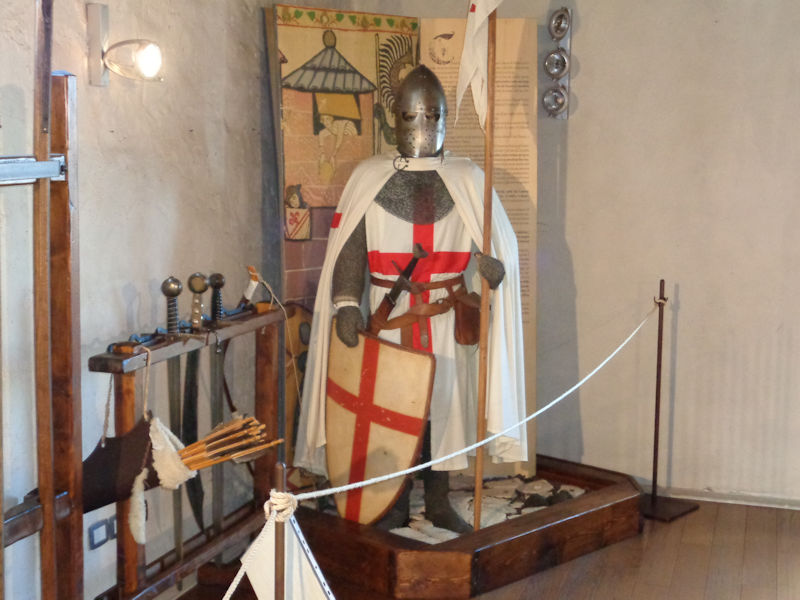
At the top of the stairs, recreations of typical medieval costumes, with interpretive panels in Italian. This would seem to represent a Crusader or perhaps a Padovan knight.
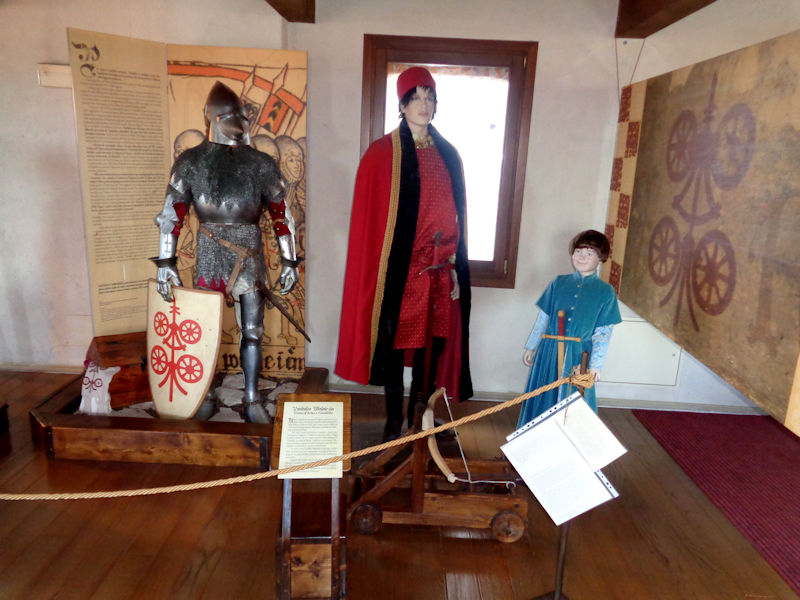
A knight with the Carraresi coat of arms and, it would seem, an elegant gentleman. And a kid.
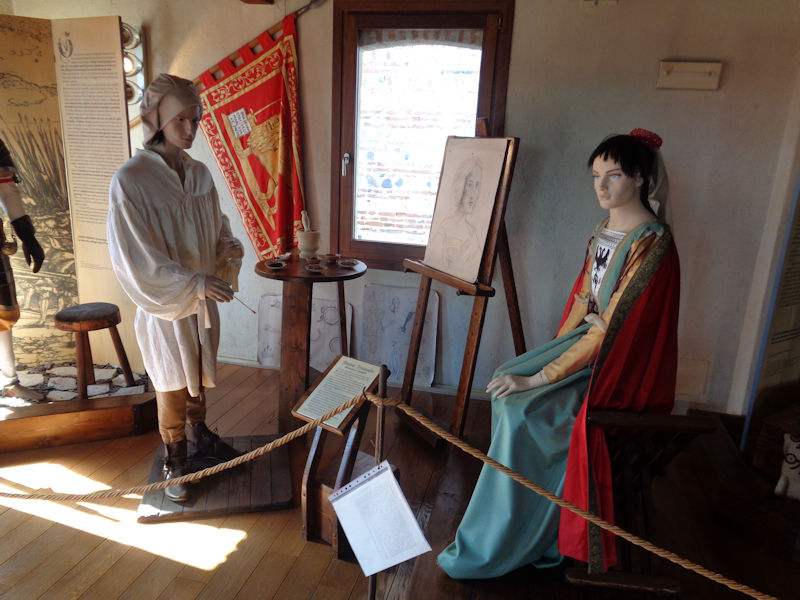
This is meant to represent Violante Bentivoglio, "patron of Cittadella", having her portrait done; daughter of the Bologna Bentivoglios, she was married to Pandolfo IV Malatesta who was briefly Lord of Cittadella, arriving here in 1503 and living with him in the Palazzo Pretorio, and leaving with him when Venice sent him into exile for switching his allegiance to the Emperor Maximilian I.
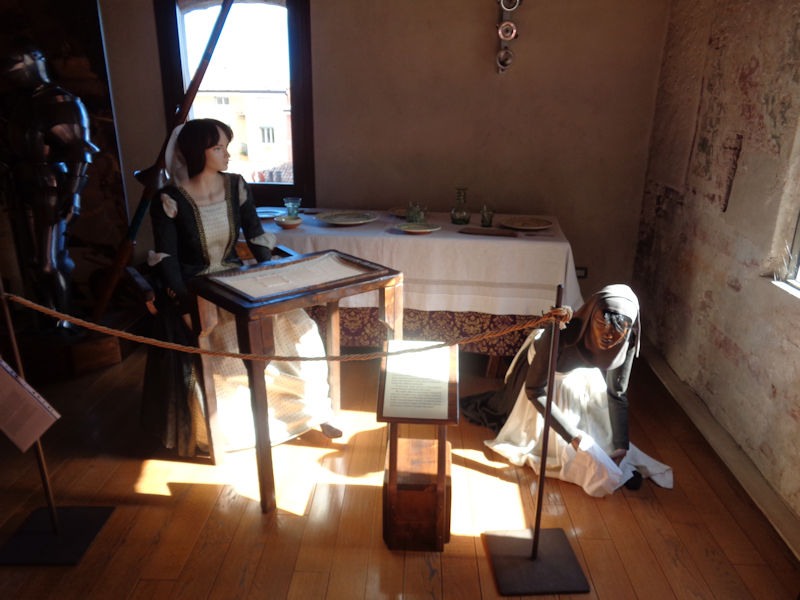
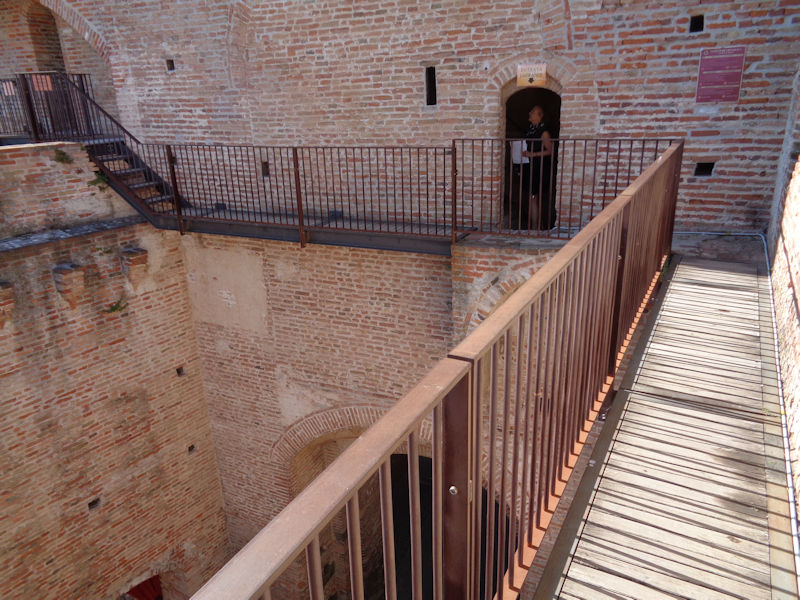
Ready for the Big Wallwalk

At the top of the Porta Bassano parapet
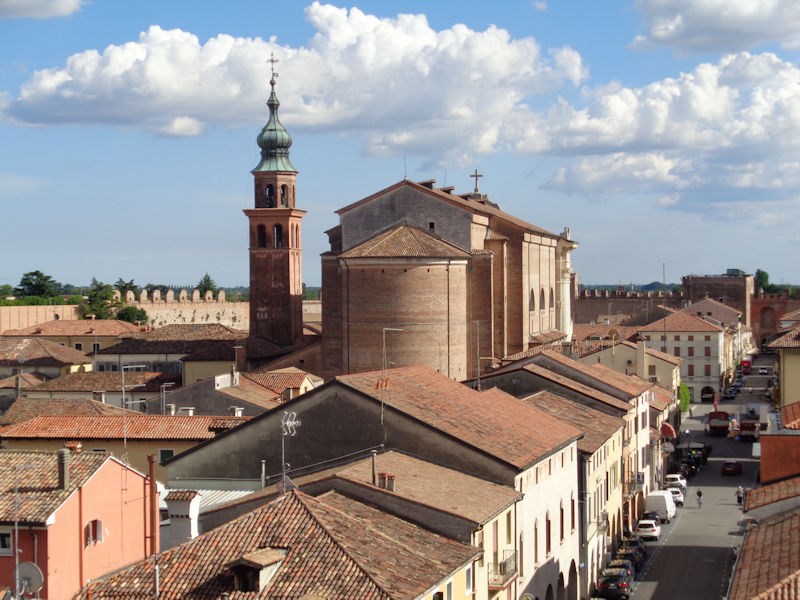
The Duomo from the north, looking down the Via Roma 500m to the Porta Padova

The moat below the Porta Bassano, with . . .

. . . frescoed buildings on the far side.

Looking from the Rocca or fortress of the Bassano Gate, eastward towards the Treviso Gate 320m over the way
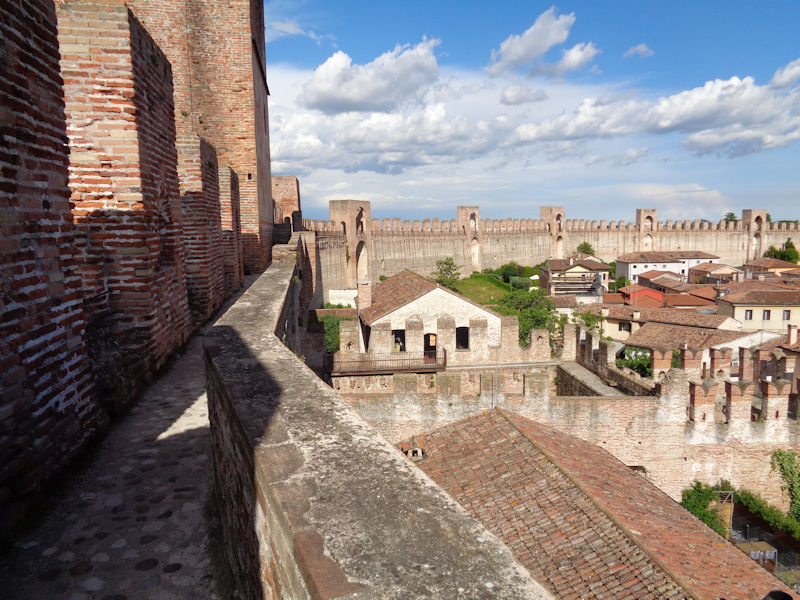
The Parapet Walk, 14m above the street. The keep towers rise to 25 to 30m.

The Duomo from the northwest

This is the only section of the circumvallation that was not intact, a problem solved in the recent renovations. It is generally understood to have been destroyed by artillery fire during the War of the League of Cambrai in the early 16th century.
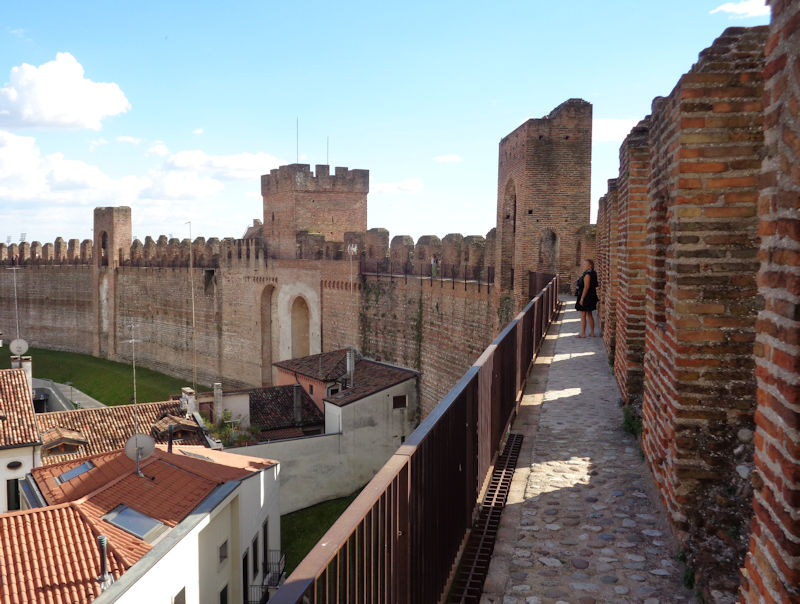
The Porta Vicenza or western gate, and the towers spaced 40m apart all the way round

Outside the Vicenza Gate


The Via Indipendenza leading to the Duomo, becoming the Via Marconi to the Treviso Gate. The city administration building is in the right foreground.
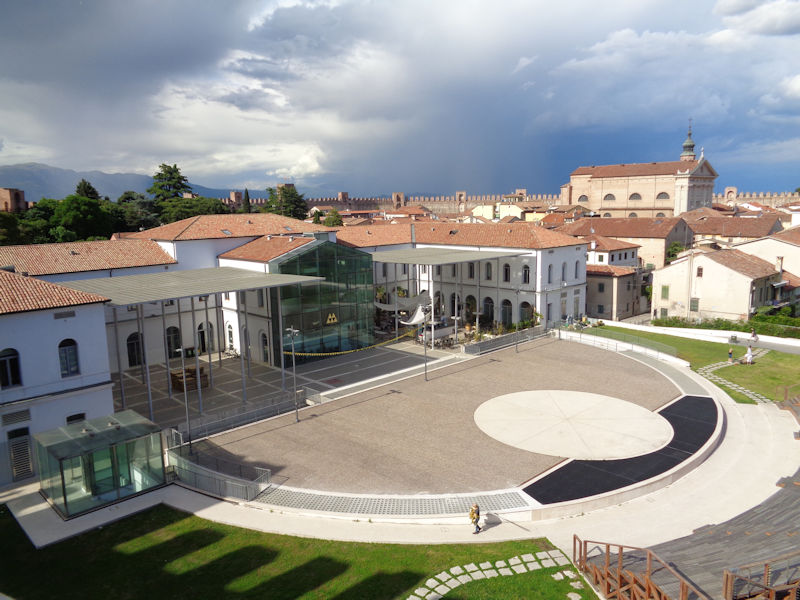
The rear of the city hall, the Palazzo Mantegna, a 16th century building with a long useful life as a school, now thoroughly renovated, with its open-air theatre over an underground parking lot opening out onto an expansive public park still within the walls.
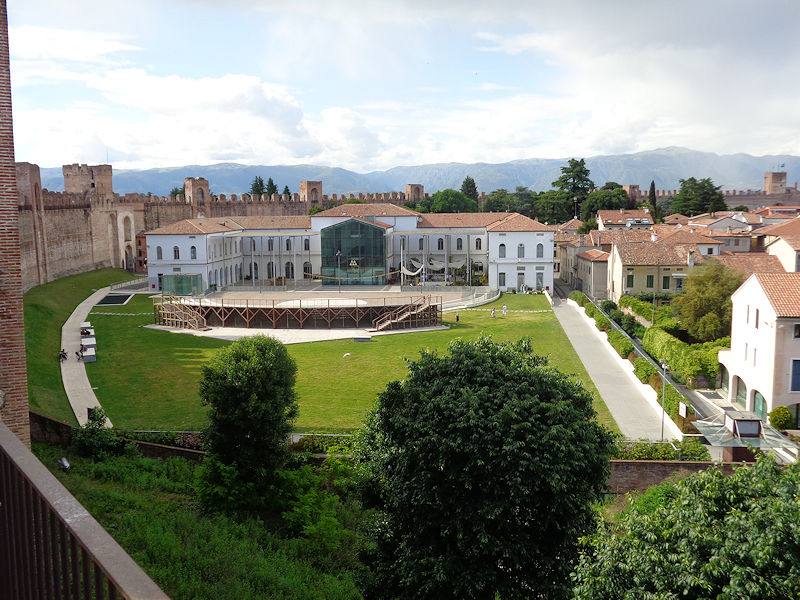
The city hall with its public park
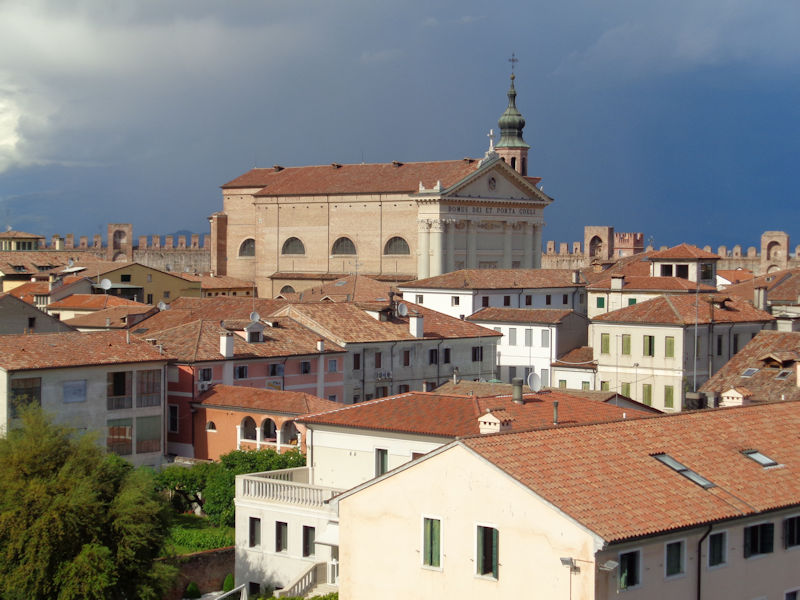
The Duomo from the southwest

Approaching the Padovan Gate, with the apse of the Chiesa del Torresino built against the town walls, named for the little tower alongside it, pressed into service as its belltower

The Duomo
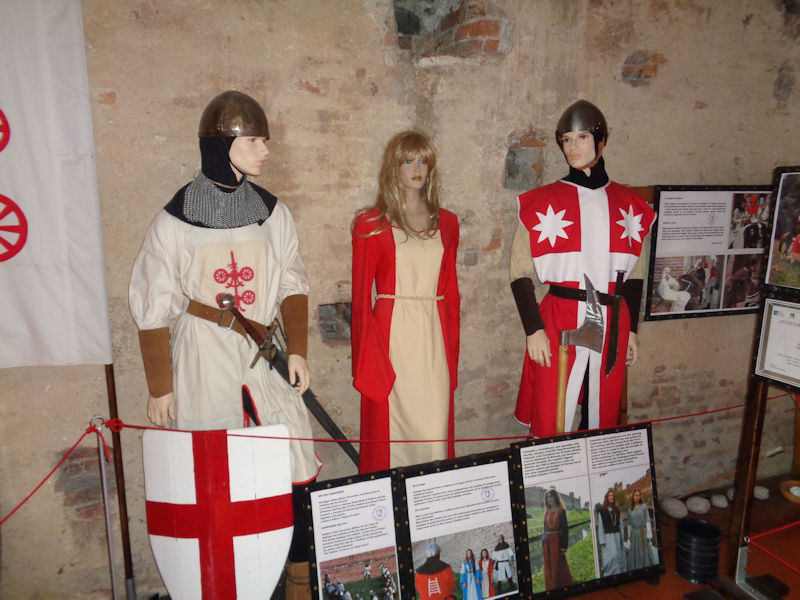
In the massive Torre di Malta, Ezzolino's "most horrible prison", in the Porta Padova, now home to a souvenir shop and an archaeological museum. The photos below the figures record the regular medieval reenactments held in civic festivals, using some of these materials.
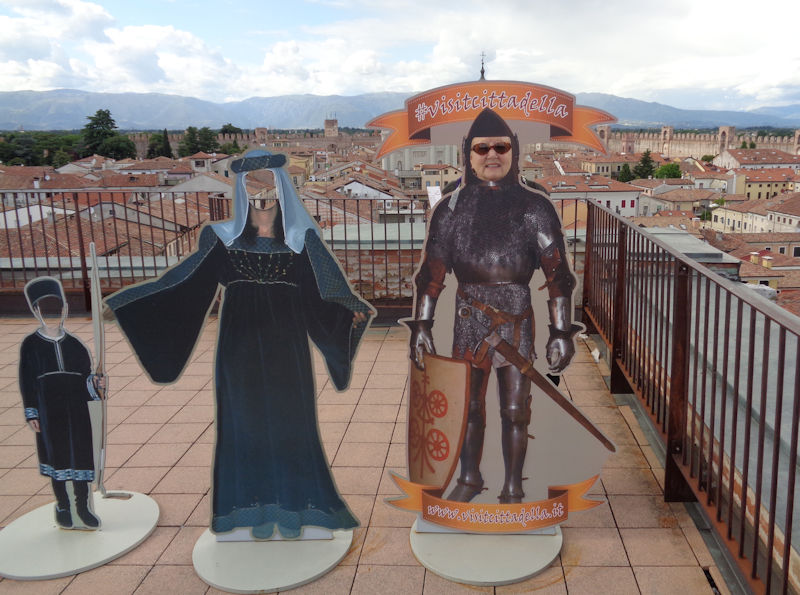
A Padovan soldier loose on the battlements
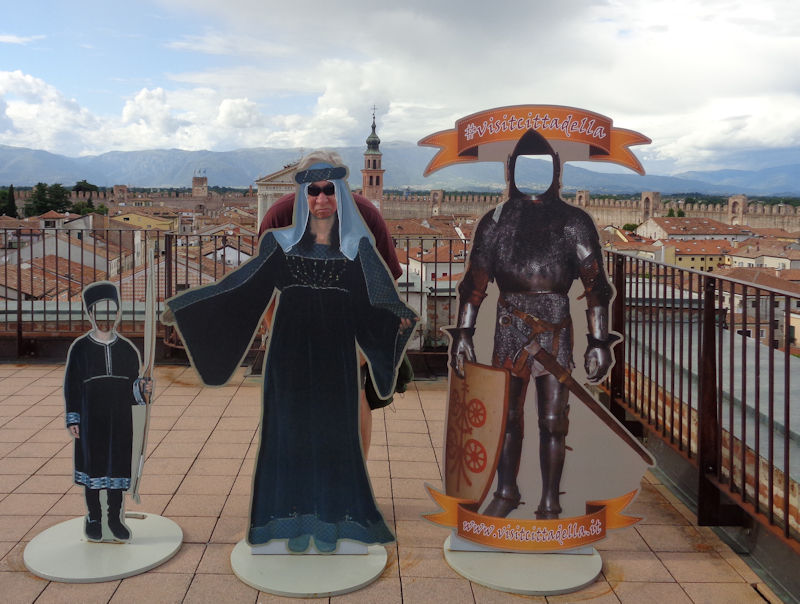
An incarnation of Lady Violante Bentivoglio

The Church of Santa Maria del Torresino from the front
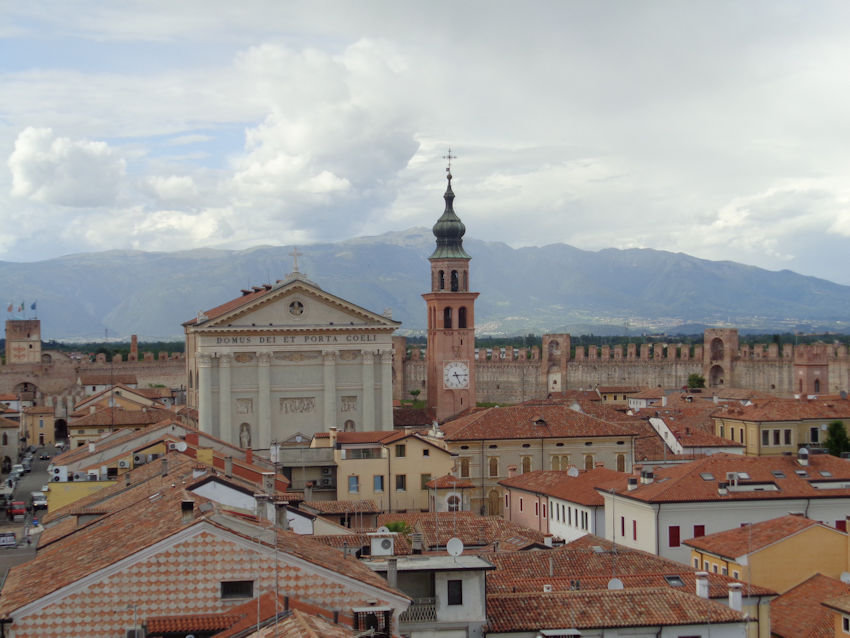
House of God and Gateway to Heaven. Monte Grappa is on the horizon.
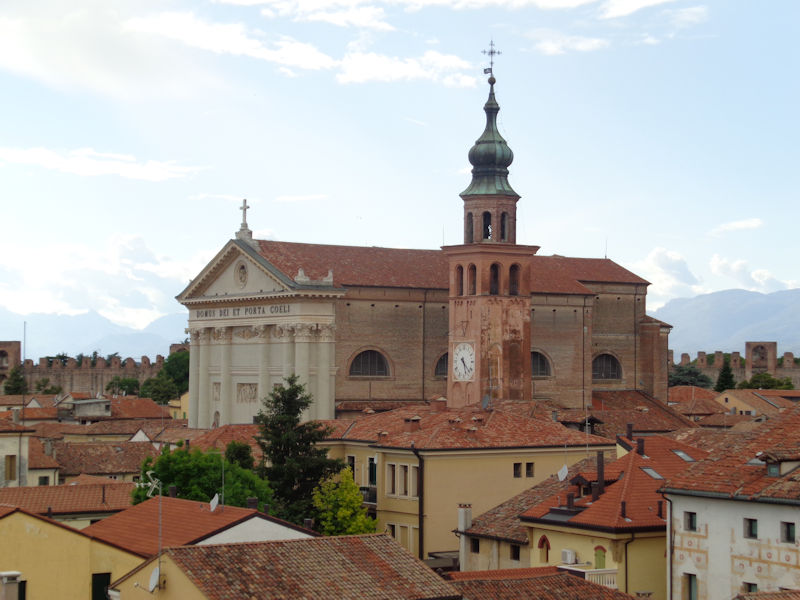

This way to the exit.
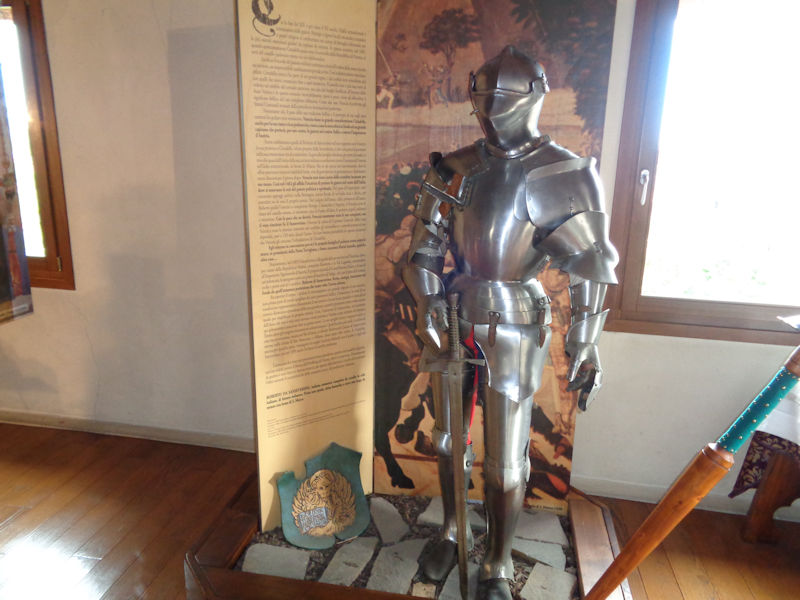
-- Have a safe journey. Come back again.
Next: Back to the south: a visit to Monselice and the Euganean Hills














 Dwight Peck's personal website
Dwight Peck's personal website





























































